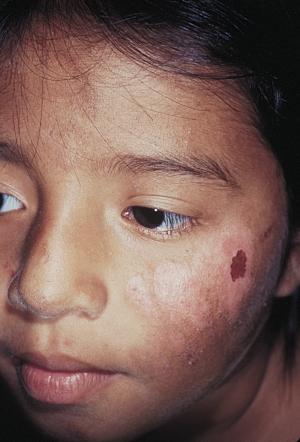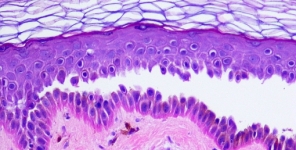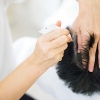Un reperto cutaneo scambiato per abuso fisico
 Le diagnosi errate durante le valutazioni per abusi su minori sono gravi.
Le diagnosi errate durante le valutazioni per abusi su minori sono gravi.
Poiché le lesioni cutanee sono comuni negli abusi, è importante rammentare che alcune potrebbero imitare anche un abuso fisico.
Il presente studio prospettico ha identificato i reperti cutanei simili agli abusi in una coorte di bambini valutati per possibile abuso fisico.
Si è trattato di un'analisi secondaria dei dati provenienti dallo studio cross-sezionale, osservazione e prospettico della rete di ricerca Examining Siblings To Recognize Abuse, che ha coinvolto 20 gruppi di bambini statunitensi vittime di abusi.
I soggetti avevano un'età inferiore ai 10 anni e sono stati valutati da medici specializzati in abusi su minori (CAPs).
I CAPs hanno documentato prospetticamente se fossero stati identificati dei reperti cutanei simili durante le loro valutazioni degli abusi fisici.
Sono stati valutati i dettagli di ogni paziente con lesioni cutanee simili a quelle di abusi così da determinarne le diverse tipologie e la probabilità percepita di abuso.
Dei 2,890 bambini valutati per abuso fisico, su 137 è stata identificata almeno una lesione di questo tipo e 69 avevano più di una lesione.
Anche se per 985 soggetti di 2,753 (39%) senza lesioni cutanee simili avevano un alto livello di preoccupazione per abusi, solo 9 bambini su 137 (6%) con queste lesioni avevano alti livelli di preoccupazione (p < 0.001).
Dei 69 bambini con lesioni cutanee simili ad abusi, 56 (81%) sono stati diagnosticati attraverso l'anamnesi e l'esame obiettivo.
Le lesioni cutanee simili ad un abuso sono state identificate nel 2.4% dei bambini valutati per abuso fisico.
Alla fine, anche se per l'84% dei bambini con lesioni cutanee di questo genere si è stabilito che c'era poca o alcuna probabilità di abuso, un piccolo numero è stato comunque abusato fisicamente.
Pertanto, la valutazione da parte dei CAP diventa fondamentale per riconoscere i bambini con questo tipo di lesioni cutanee che sono stati anche abusati.
Storia della pubblicazione:
Titolo: Cutaneous Findings Mistaken for Physical Abuse: Present but Not Pervasive
Rivista: Pediatric Dermatology. doi: 10.1111/pde.12290
Autori: Kimberly A. Schwartz, James Metz, Kenneth Feldman, Robert Sidbury, Daniel M. Lindberg
Affiliazioni:Boston Medical Center, Pediatrics, Child Protection Team, Boston, Massachusetts Seattle Children's Hospital, Seattle, Washington General Pediatrics, Department of Dermatology, School of Medicine, Seattle Children's Hospital and University of Washington, Seattle, Washington Department of Emergency Medicine, University of Colorado, Denver, Colorado Kempe Center for the Prevention and Treatment of Child Abuse and Neglect, Denver, Colorado
Abstract:
Incorrect diagnoses during child abuse evaluations are serious. Because skin lesions are common in abuse, it is important to consider cutaneous mimics of physical abuse. The current study prospectively identified cutaneous mimics in a cohort of children evaluated for possible physical abuse. This is a secondary analysis of data from the Examining Siblings To Recognize Abuse research network's prospective, observational, cross-sectional study involving 20 U.S. child abuse teams. Subjects were younger than 10 years old and were evaluated by child abuse physicians (CAPs) for concerns of physical abuse. CAPs prospectively documented whether mimics were identified during their physical abuse evaluations. Details of each patient with cutaneous mimics were evaluated to determine the types of mimics, which part of the evaluations identified mimics, and the perceived abuse likelihood. Of 2,890 children evaluated for physical abuse, 137 had at least one mimic identified and 69 had some cutaneous mimic components. Although 985 of 2,753 (39%) subjects without mimics had high levels of abuse concern, only 9 of 137 (6%) children with mimics had high levels of abuse concern (p < 0.001). Of 69 children with cutaneous mimics, 56 (81%) were diagnosed by history and physical examination. Cutaneous abuse mimics were identified in 2.4% of children evaluated for physical abuse. Although it was eventually determined that there was little or no concern for abuse in 84% of children with cutaneous mimics, a small number were physically abused. CAP evaluation may be valuable in recognizing children with cutaneous mimics who also were abused.





